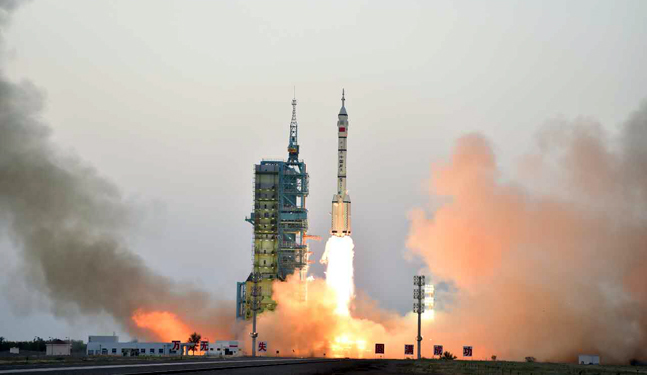China just launched a 'reusable experimental spacecraft' into orbit

China launched an experimental reusable spacecraft into orbit on Friday (Sept. 4), with few details about what the spacecraft will do.
A report from Chinese state media's Xinhua said the launch was successful and that a Long March 2F rocket sent the spacecraft into orbit from the Jiuquan Satellite Launch Center in the Gobi Desert, but it provided no information about exact launch time or what technologies the spacecraft will test.
"After a period of in-orbit operation, the spacecraft will return to the scheduled landing site in China. It will test reusable technologies during its flight, providing technological support for the peaceful use of space," Xinhua said in the report.
Related: See China's new spacecraft to take astronauts to the moon (photos)
Space News noted a few months of low-key work related to the launch and that it may be the same reusable space plane project that China said, back in 2017, that it wanted to launch in 2020.
"Airspace closure notices released Thursday provided the first indication of an imminent launch," Space News wrote. "No images of the spacecraft nor the launch have so far been released. An apparent higher-than-usual level of security surrounding the mission also prevented bystander images appearing on social media."
In earlier reports, China said it planned reusable Earth-to-orbit space vehicles that would take off and land like an airplane, horizontally. Officials from the China Aerospace Science and Industry Corporation added in 2017 that they had finished several ground tests for engines and other components.
Get the Space.com Newsletter
Breaking space news, the latest updates on rocket launches, skywatching events and more!
The possible Chinese space plane project comes as the United States Air Force is working on its own reusable space plane, called the X-37B. The Air Force project has flown four times in space so far, bringing secret payloads into space for months at a time.
Other winged vehicles have made it to orbit before these projects. NASA's now-retired space shuttle program flew 135 missions with astronauts on board between 1981 and 2011. A similar Soviet Union vehicle called Buran flew a single uncrewed mission in 1988 before the program was canceled in 1993, shortly after the Soviet Union collapsed.
Private companies are working on space planes, too. Virgin Galactic's suborbital SpaceShipTwo has flown into space during test missions (at least, by the definition of the U.S. military). Virgin Galactic plans to fly customers and cargo aboard SpaceShipTwo in the coming years. Also, Sierra Nevada Corp. plans to fly NASA cargo to the International Space Station, as well as cargo and astronauts for other customers, on its Dream Chaser spacecraft.
Follow Elizabeth Howell on Twitter @howellspace. Follow us on Twitter @Spacedotcom and on Facebook.
Join our Space Forums to keep talking space on the latest missions, night sky and more! And if you have a news tip, correction or comment, let us know at: community@space.com.

Elizabeth Howell (she/her), Ph.D., was a staff writer in the spaceflight channel between 2022 and 2024 specializing in Canadian space news. She was contributing writer for Space.com for 10 years from 2012 to 2024. Elizabeth's reporting includes multiple exclusives with the White House, leading world coverage about a lost-and-found space tomato on the International Space Station, witnessing five human spaceflight launches on two continents, flying parabolic, working inside a spacesuit, and participating in a simulated Mars mission. Her latest book, "Why Am I Taller?" (ECW Press, 2022) is co-written with astronaut Dave Williams.









